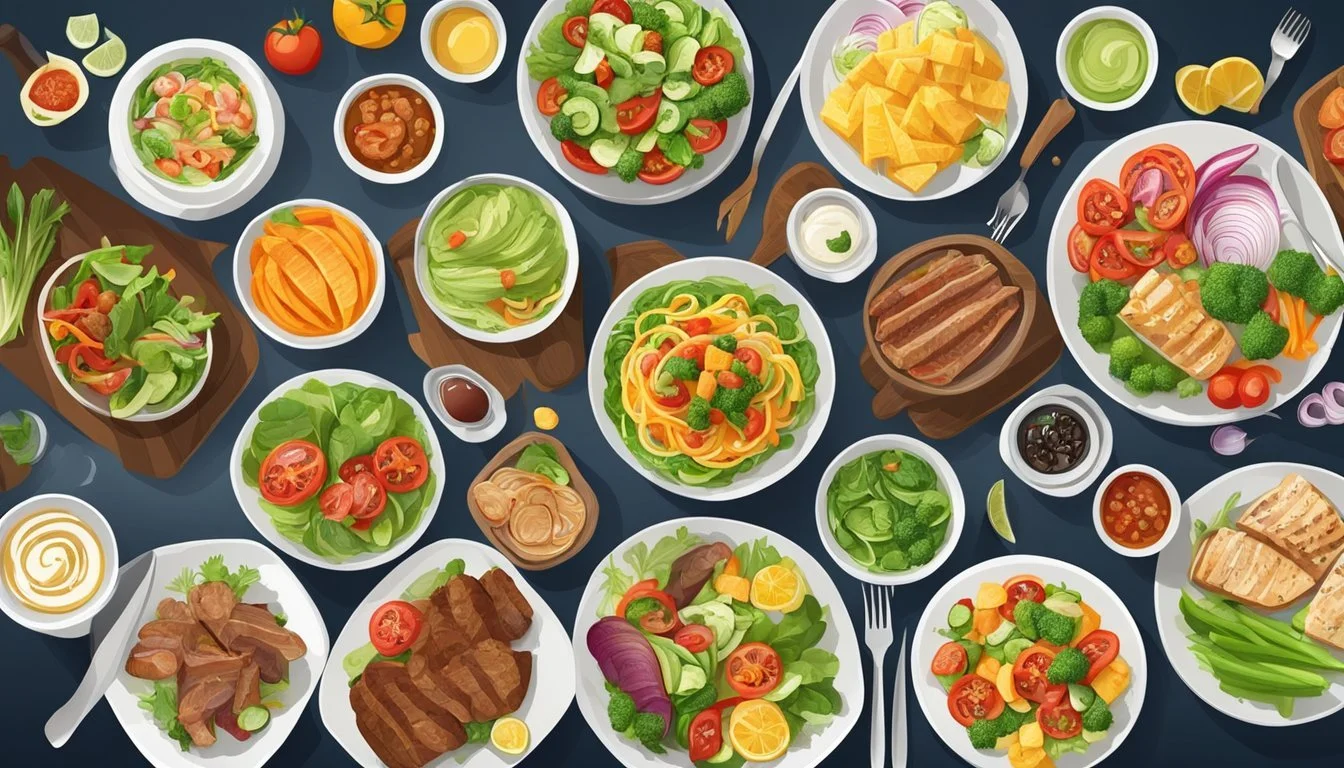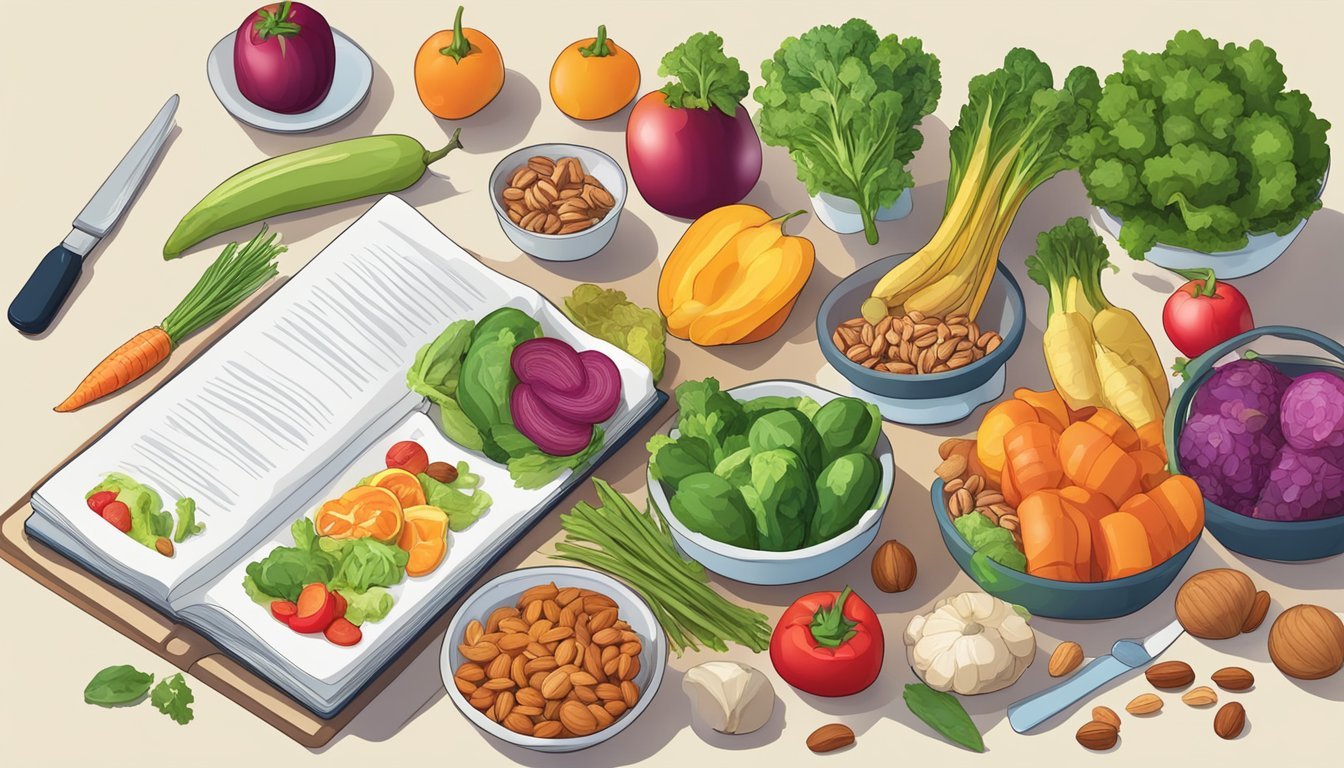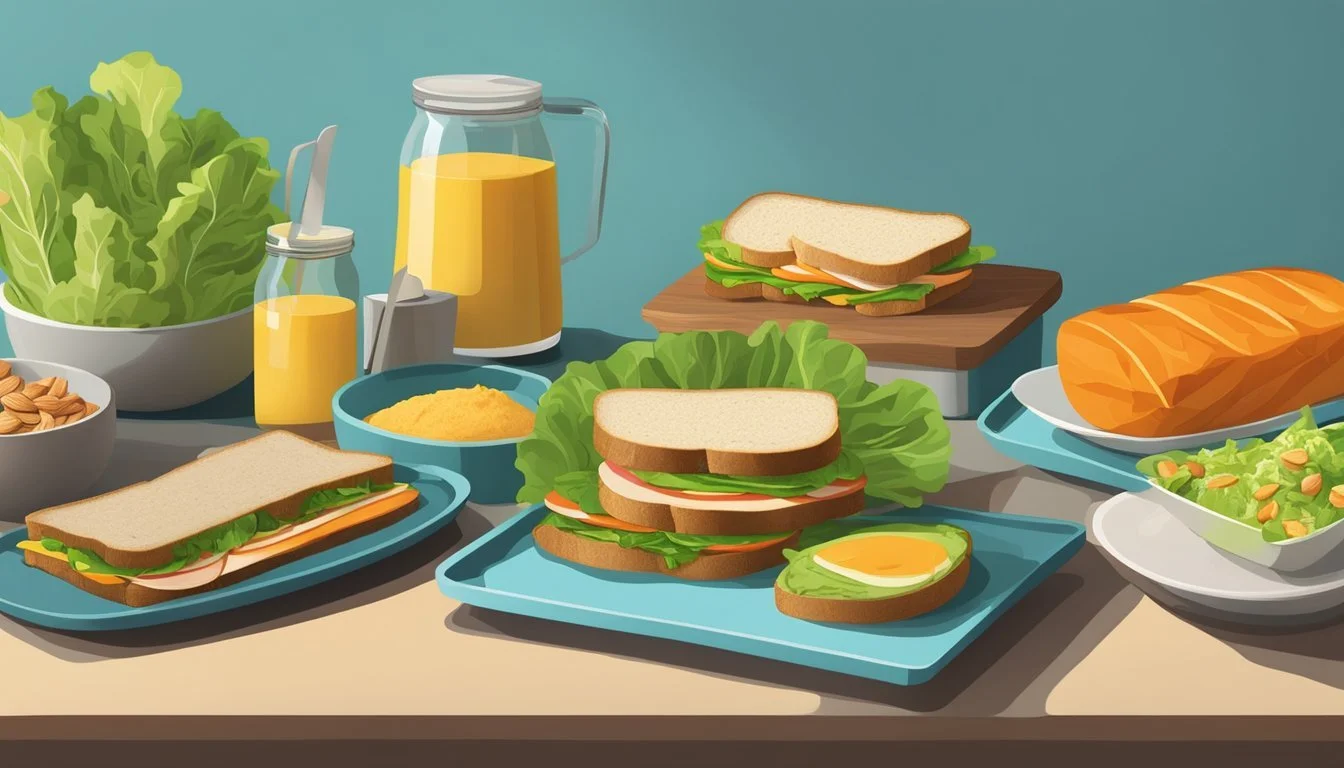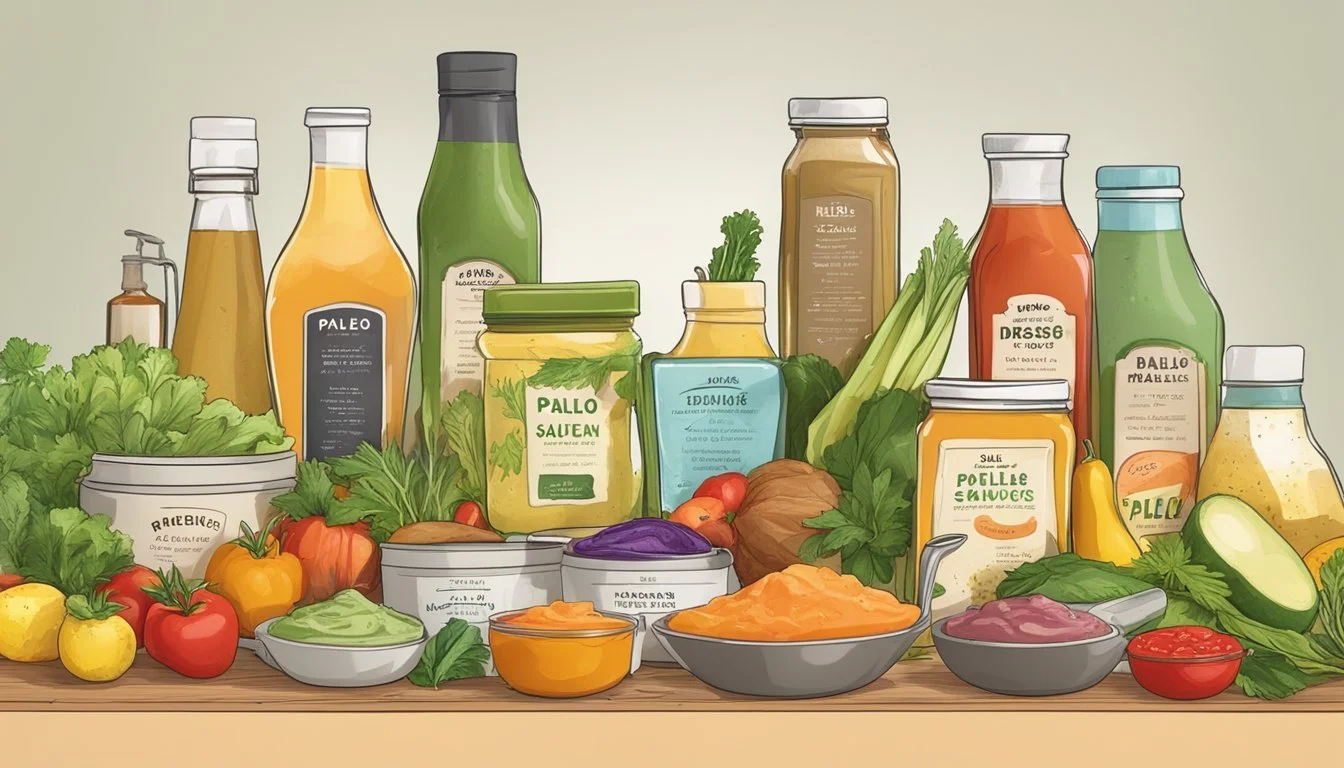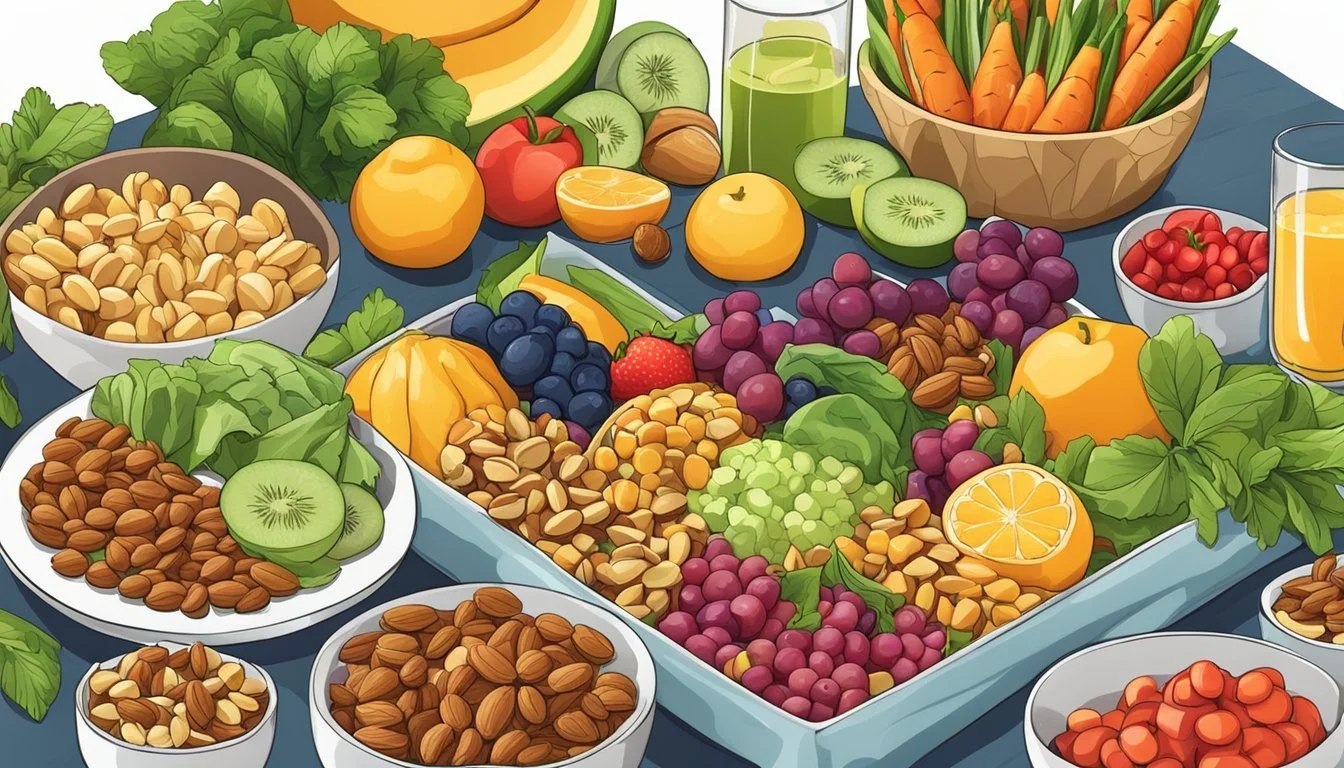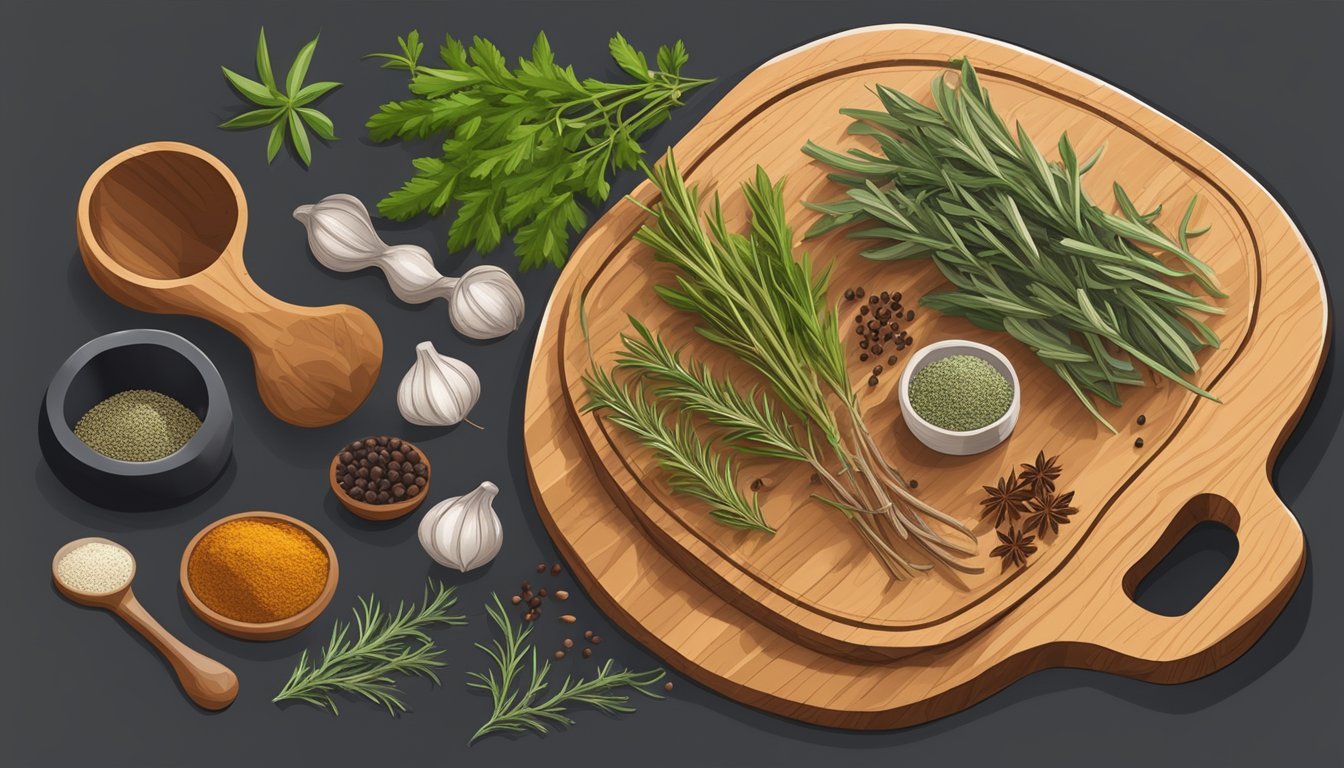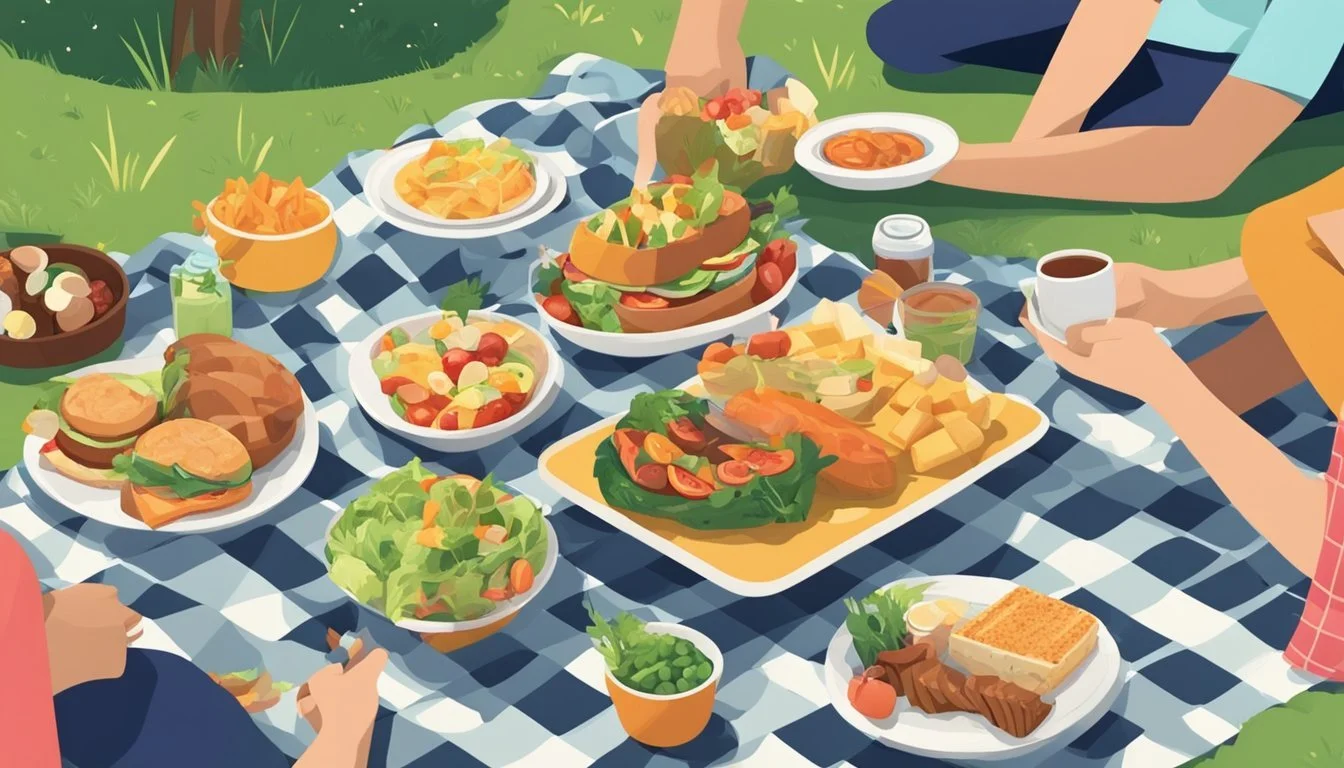The Best Paleo Diet Recipes for a Quick Lunch
Easy and Nutritious Meals
Adopting a Paleo diet requires creativity and a fresh take on meal prep, especially for those with a busy lifestyle. Quick lunches (What wine goes well with lunch?) that cater to this dietary pattern need not be mundane or repetitive. The Paleo diet emphasizes whole foods, lean proteins, vegetables, fruits, nuts, and seeds, while excluding grains, legumes, refined sugars, and dairy. With these principles in mind, numerous recipes offer both convenience and variety to the midday meal.
In the quest for satiating and flavorful options, Paleo lunches often reinvent traditional favorites using Paleo-friendly substitutes. For example, lettuce wraps can replace tortillas, presenting a crunchy alternative that is both low in carbs and high in nutrients. Similarly, innovative recipes transform the humble cauliflower into a versatile component, from 'rice' to the base of a pizza crust. These adaptations make it possible to enjoy the essence of beloved dishes while staying true to Paleo guidelines.
Paleo meal prep for lunch is geared towards simplicity and portability, making use of ingredients that hold up well throughout the week. The focus is on dense nutrition and sustained energy to power through the afternoon. With a mix of robust flavors and textures, these recipes are designed to be achievable for cooks of any skill level, ensuring that maintaining a Paleo diet can be both enjoyable and practical.
Understanding the Paleo Diet
The Paleo Diet encourages individuals to eat in a manner that emulates the diet of ancient human hunter-gatherer ancestors. This diet is rooted in the belief that modern diseases are linked to the Western diet and processed foods, and that by reverting to a diet consisting of foods that could be hunted or gathered, one's health can improve.
Core Components of the Paleo Diet:
Proteins: Emphasis is on grass-fed meats, seafood, and eggs.
Vegetables: A variety of vegetables are encouraged, predominantly non-starchy, leafy greens.
Fruits: Consumption of fruits is generally limited to maintain lower sugar intake.
Fats: Healthy fats from nuts, seeds, avocados, olive oil, and fish oil are included.
Exclusions: Dairy, grains, processed foods and sugars, legumes, starches, and alcohol are to be avoided.
The Paleo Diet aims to provide a balanced and nutrient-dense meal plan, focusing on the intake of whole, unprocessed foods. These foods are more in line with what the human body evolved to digest, and the diet proposes that such a match is integral to maintaining wellness.
Adherents of Paleo typically report experiencing more consistent energy levels, improved satiety from meals, and an overall sense of well-being. This approach to eating is seen as a lifestyle change rather than a temporary diet, and is often referred to as a wellness journey.
One can customize the Paleo diet to fit individual needs and sustainability, but the core principle remains the same: consume real, whole foods for a healthier body and mind.
Quick Paleo Lunch Fundamentals
When adhering to a Paleo diet, lunches should focus on including protein-rich meats, a variety of vegetables, and a mix of nuts and fruits. The foundation of a quick Paleo lunch hinges on being grain-free and unprocessed, drawing on the principles of ancient diets that consisted largely of whole foods.
Protein Sources: Ideal quick lunches include lean meats like chicken, turkey, or beef. Seafood such as tuna or shrimp can also be rapidly prepared for a lunchtime protein boost.
Vegetables: A rainbow of vegetables not only provides essential nutrients but also ensures a satisfying crunch and flavor. They can be eaten raw, steamed, or lightly sautéed.
Healthy Fats: To maintain energy levels, include fats from sources like avocados, olive oil, or nuts such as almonds or walnuts.
Tools for Convenience:
Pre-Cooked Meats: Having pre-cooked meats ready to go can save precious time.
Salads (What wine goes well with salads?) in a Jar: Assembling a salad in a jar with layers of dressing, protein, vegetables, and nuts can be a transportable and convenient option.
Protein Vegetables Healthy Fats
Chicken nuggets Mixed greens Avocado slices
Turkey meatballs Spiralized zucchini Olive oil dressing
Chorizo sausage chili Sweet potato Chopped nuts
Curry chicken salad Carrot sticks Coconut shreds
Finally, the inclusion of fruits such as berries or slices of apple can provide a sweet touch to a lunch meal without the addition of refined sugars. Adapting to the Paleo lifestyle for lunch is simple with the right building blocks and a dash of creativity.
Protein-Packed Paleo Lunches
For individuals following the Paleo diet, lunches that are rich in protein are essential for maintaining energy levels throughout the day. Here are some protein-packed Paleo lunch ideas that are sure to satisfy:
Avocado Chicken Salad: This dish combines the creamy texture of avocados with the lean protein of chicken. It's a versatile recipe that can be served on its own or in lettuce wraps for an extra crunch.
Beef Stir Fry: Quickly stir-fried beef with a mix of Paleo-friendly vegetables offers a fulfilling and balanced meal. Opt for grass-fed beef to stick with Paleo principles and ensure a higher content of omega-3 fatty acids.
Paleo Chicken Nuggets: Homemade chicken nuggets using almond flour or coconut flour as a coating provide a protein-rich and kid-friendly option. Bake them instead of frying to keep them healthy and convenient.
Eggs and Bacon: A classic combination that's naturally Paleo, eggs paired with bacon can be enjoyed any time of the day. Whip up a quick frittata or an omelet, incorporating vegetables like spinach or peppers for added nutrients.
Salmon Salad: A salad topped with flakes of wild-caught salmon not only offers abundant protein but also provides omega-3 fatty acids. Mix with a Paleo mayonnaise or avocado oil-based dressing for added flavor.
Pork and Vegetable Skewers: Skewers with chunky pieces of pork and vegetables make for a perfect protein-packed lunch that's also fun to eat. Marinate the pork in herbs and spices for a flavorful hit.
Steak Salad: Sliced steak over a bed of mixed greens and an assortment of veggies can be a filling and protein-dense Paleo lunch. Dress with olive oil and lemon juice to keep it fresh and light.
Ground Beef Lettuce Wraps: Use ground beef with a mix of spices to create delicious and filling lettuce wraps. Versatile and easy to customize with different herbs and Paleo sauces, they're a great on-the-go lunch option.
These ideas showcase how one can keep their midday meals varied and exciting while adhering to a Paleo lifestyle. Each suggestion is centered on high-quality proteins, ensuring that they are both nutritious and in line with dietary guidelines.
Vegetable-Centric Paleo Lunch Ideas
Vegetable-based dishes are integral to the Paleo diet, offering a wealth of nutrients and fiber. These lunch ideas are designed to be flavorful and satisfying, while remaining aligned with Paleo principles by focusing on fresh, non-starchy vegetables.
Salad Creations
Salads are a staple in the Paleo diet, and using ingredients like sweet potato and avocado can make them more filling and nutritious. For example, a roasted sweet potato and avocado salad provides healthy fats, vitamins, and a satisfying texture. A mix of greens, such as spinach or kale, tossed with broccoli, cauliflower, and a lemon olive oil dressing can make a nutrient-dense meal that is both delicious and easy to prepare.
Sweet Potato & Avocado Salad
Greens of choice (e.g., spinach, arugula)
Roasted sweet potato cubes
Sliced avocado
Optional: Add grilled chicken or hard-boiled eggs for protein
Broccoli & Cauliflower Delight
Mixed greens
Steamed broccoli florets
Roasted cauliflower
Lemon olive oil dressing
Wrap Alternatives
Wraps provide a convenient way to enjoy a handheld meal without the need for bread. Using lettuce leaves or thinly sliced zoodles (zucchini noodles) as a wrap substitute is an excellent Paleo-friendly option. One can fill these with a variety of vegetables such as sautéed mushrooms, cauliflower rice, and even include some grilled meats or seafood for an added protein boost. An avocado and veggie wrap, using large lettuce leaves and filled with sliced vegetables and smashed avocado, could serve as a refreshing and light lunch option.
Lettuce Leaf Veggie Wrap
Large lettuce leaves (e.g., romaine or butter lettuce)
Sliced bell peppers
Sautéed mushrooms
Thinly sliced avocado
Optional: Add shredded chicken or shrimp for protein
Zoodle Wrap Delight
Zoodles as the base
Mixed vegetable fillings
Cauliflower rice
Optional: Include a paleo-friendly sauce like homemade pesto for extra flavor
Satisfying Paleo Soups and Stews
When adhering to a paleo diet, finding quick lunch options that are both fulfilling and compliant with dietary restrictions can be a challenge. Soups and stews are excellent choices as they can be nutrient-dense, satisfying, and versatile. Here are some paleo-friendly soups and stews that promise to keep one's midday meal hearty and delicious.
Chicken Zucchini Noodle Ramen: A spin on traditional ramen, this dish uses spiralized zucchini in place of wheat noodles. Simmered in a homemade chicken broth infused with garlic and ginger, it's finished with tender chicken breast and a soft-boiled egg. Coconut aminos add a rich umami flavor, while greens, such as kale or bok choy, contribute a nutrient boost.
Pumpkin Soup: Creamy coconut milk pairs beautifully with pumpkin in this soup, providing a rich texture and complementary flavors. Utilizing a slow-cooker, one can simply combine the ingredients in the morning and enjoy a velvety, warming soup by lunchtime.
Cabbage Beef Soup: For a heartier option, cabbage beef soup is a paleo-friendly take on classic comfort food. It combines ground beef with a medley of vegetables, including cabbage, in a savory tomato-based broth.
For convenience, many paleo soups and stews can be prepared in a slow-cooker. Meals like a slow-cooker chicken hash can be set to cook in the morning and ready by lunch, offering both ease and taste. By including a variety of vegetables and lean proteins such as chicken, and flavoring with paleo-friendly ingredients like coconut milk, one can create lunches that satisfy without straying from paleo eating principles.
Innovative Paleo Sandwich Alternatives
Adopting a Paleo diet doesn't mean sacrificing the enjoyment of a sandwich. By substituting traditional bread with creative alternatives, one can still savor the convenience and flavors of sandwich-like options. These inventive alternatives provide the satisfaction of a handheld meal without compromising Paleo principles.
Lettuce and Veggie Wraps
Lettuce wraps serve as a fresh and crisp alternative to bread, capable of holding a variety of fillings. Using large lettuce leaves, such as romaine or butter lettuce, they can be filled with savory combinations like bacon and avocado or a hearty egg salad. These wraps offer a crunch with each bite and a refreshing taste.
Bacon Avocado Lettuce Wraps:
Large lettuce leaves
Cooked bacon strips
Sliced avocado
Optional: add tomato or onions for extra flavor
Egg Salad in Lettuce Cups:
Hard-boiled eggs, mashed
Dijon mustard
Wrapped in sturdy lettuce
Paleo Bowls
Paleo bowls, often referred to as "deconstructed sandwiches," are another lunchtime game-changer. Ingredients traditionally found in sandwiches like the Cuban are layered into bowls, providing a satisfying and hearty meal.
Cuban Sandwich Bowl:
Pulled pork or sliced ham
Diced pickles
Mustard
Shredded lettuce as the base
The versatile avocado tuna salad is another excellent bowl option, mixing flaked tuna with avocado, diced onions, and fresh herbs—served over a bed of greens or alongside roasted sweet potatoes for a balance of protein and healthy fats.
Creative Use of Leftovers in Paleo Meals
Leftovers present an opportunity for culinary creativity, particularly when adhering to a Paleo diet. Gone are the days of repetitive meals; with a pinch of innovation, leftovers transform into delectable quick lunches.
One can begin with the classic Mason jar salads, a convenient and highly customizable option. Layering is crucial for freshness; start with a dressing base, followed by protein such as shredded leftover chicken, then pack in vibrant vegetables, and top with nuts or seeds for a crunch.
Chicken salad is another delightful way to use leftover chicken. Mixing the chicken with avocado may serve as a creamy and healthy binder, perfect for eating on its own or in lettuce wraps. For an aromatic touch, herbs like basil or chives could be included.
For a swift answer to hunger, easy Paleo recipes include making a stir-fry. Leftover vegetables and proteins like pork or beef can be quickly refried with coconut aminos or homemade Paleo sauce, served alongside cauliflower rice.
Ingredient Use in Paleo Lunch Recipe
Cooked Chicken Dice and add to salads or create a chicken salad with Paleo mayo
Cooked Vegetables Toss in omelets or combine with eggs for a frittata
Sweet Potatoes Cube and mix into a hash with fresh herbs and greens
In summary, leftovers shouldn't be seen merely as echoes of dinners past. Instead, they're ingredients that promise convenience and ease when assembling nutritious, flavorsome Paleo lunch recipes. By incorporating leftovers into salads, stir-fries, and hashes, not only is food waste reduced, but midday meals also become a joy to anticipate.
Decadent Paleo Dressings and Sauces
When adopting a Paleo diet, one doesn't have to sacrifice flavor for health. Decadent Paleo dressings and sauces can effectively enhance the taste of a quick lunch while adhering to dietary guidelines. Crafted from wholesome ingredients, these dressings and sauces can transform a simple salad or dish into a delightful and satisfying meal.
Fruit-based Dressings
Ingredients to Consider:
Vine: Balsamic Vinaigrette incorporates a tangy taste and pairs well with dark, leafy greens.
Fruit: Use pureed fruits like mango or berries to create a sweet and tangy dressing.
Acid: Freshly squeezed lemon or lime juice can provide a sharp zest.
Sample Recipe:
Mango Lime Dressing:
Purée ripe mango with fresh lime juice, a touch of honey, and a dash of sea salt for a tropical twist.
Creamy Paleo Sauces
Ingredients to Consider:
Base: Mayo made with avocado or olive oil offers a creamy texture while remaining Paleo-friendly.
Flavor Boosters: Scallions, dill, and sunflower seed butter add depth and richness.
Alternatives: Coconut aminos serve as a soy sauce substitute, adding a savory, umami flavor.
Recipes to Try:
Avocado Mayo: Blend avocado oil with egg yolks, lemon juice, and a pinch of salt.
Sunflower Seed Butter Sauce: Whisk sunflower seed butter with coconut aminos, vinegar, and minced garlic for a creamy, nutty sauce.
Paleo-Friendly Snacks and Sides
When following a Paleo diet, having a variety of savory snacks (What wine goes well with savory snacks?) and sides can complement any quick lunch. Nuts such as almonds and walnuts offer a hearty dose of healthy fats and proteins. They're an excellent snack on their own or can be added to salads for an extra crunch.
Fruits are the natural sweet treat of the Paleo world. Options like apples and raspberries provide valuable fiber and antioxidants. They're perfect for a midday pick-me-up and can be easily carried for convenience.
For those craving something warm, sweet potato fries are a satisfying choice. Baking them with a touch of olive oil and seasoning can fulfill the need for a comforting side without straying from Paleo guidelines.
Broccoli Salad:
Fresh broccoli, chopped
Olive oil or Paleo-friendly mayonnaise
Add-ins like red onion, bacon, or nuts
Egg muffins make for a protein-packed snack that can be made in advance. They're versatile, allowing for various ingredients like spinach, bell peppers, or even a bit of Paleo cheese if one's diet permits.
Here's a simple list to keep on hand:
Nuts: Almonds, Cashews, Pecans
Fresh Fruits: Apples, Berries, Banana
Veggie Sides: Broccoli Salad, Sweet Potato Fries
Egg-Based: Paleo Egg Muffins
These snacks and sides can be prepared quickly, are travel-friendly, and support a balanced Paleo diet. They ensure that one can enjoy delicious foods while staying true to their dietary preferences.
Baking with Paleo Ingredients
Baking on the Paleo diet requires thoughtful substitution of conventional baking ingredients with those that comply with Paleo guidelines. When it comes to flours, almond flour is a staple, prized for its rich, nutty flavor and versatility. As it's gluten-free and grain-free, it makes an excellent choice for Paleo recipes. Coconut flour is another alternative that Paleo bakers frequently use due to its high fiber content and ability to absorb moisture, providing a soft texture to baked goods.
For wet ingredients, coconut milk serves as a dairy-free substitute, lending a creamy consistency and subtle sweetness that complements a variety of flavors. It's particularly useful in recipes where the richness of dairy milk would be desirable.
A Table of Common Paleo Baking Substitutes
Conventional Ingredients Paleo Substitutes
Wheat Flour Almond Flour, Coconut Flour
Milk Coconut Milk
Sugar Honey, Maple Syrup
Butter Coconut Oil, Ghee
When creating easy Paleo chicken nuggets, these ingredients can be utilized to craft a crispy outer coating. One can mix almond flour with spices to replace traditional breadcrumbs, and dip chicken pieces in coconut milk before breading, providing an uncomplicated yet delicious lunch option.
Furthermore, by exploring Paleo baking, home cooks can enjoy a variety of satisfying and nourishing treats, like cookies or muffins, by simply adapting the approach to ingredients. Paleo-friendly baked goods may often require experimentation with proportions and baking times, but the end results can be both rewarding and aligned with nutritional goals.
Herbs and Spices in Paleo Cooking
In Paleo cooking, the right mix of herbs and spices can elevate a quick lunch to new flavorful heights. They infuse dishes with rich flavors without adding unwanted processed ingredients or sugars.
Rosemary is a robust herb, bringing a woody fragrance to Paleo dishes, pairing well with meats and root vegetables. Its needles release flavors best when chopped fine or bruised to release the natural oils.
Sage has a slightly peppery flavor and is often used in conjunction with other herbs like rosemary and thyme. It works well in giving a depth of flavor to soups and poultry dishes. Because of its strong taste, moderation is key.
To add freshness to a dish, green onions serve as both a garnish and flavoring agent. They provide a mild onion taste and are a rich source of essential nutrients, fitting perfectly with the Paleo ethos of whole, nutritious foods.
Lastly, dill, with its light, feathery fronds and sweet, aromatic flavor, is ideal for enhancing fish or salad recipes. It's particularly compatible with lemon, offering a zesty kick to Paleo-friendly vinaigrettes.
Herb/Spice Pairings Usage Tips
Rosemary Meats, Root Vegetables Chop finely for better flavor release
Sage Poultry, Soups Use in moderation due to strong taste
Green Onion Salads, Toppings Use as garnish and for a mild onion flavor
Dill Fish, Salads Mix with lemon in dressings for zest
By incorporating these herbs and spices thoughtfully, anyone can create a lunch that's not only quick but also adheres to Paleo principles and satisfies taste buds with natural, wholesome flavors.
Navigating Paleo Eating in Social Settings
Adhering to a Paleo diet during social occasions can present challenges, as typical party fare often doesn't align with Paleo principles. But with a strategic approach, one can manage these situations without compromising their wellness journey.
Firstly, it’s advisable to eat a small, Paleo-friendly meal before attending an event. This will reduce the temptation to stray from Paleo guidelines due to hunger.
Communication is key. Informing hosts of dietary preferences may encourage them to provide Paleo options. If one is attending a potluck, bringing a Paleo dish ensures there is something appropriate to eat, while also sharing the lifestyle with others.
When Dining Out Tips
Menu Research Look up the menu ahead of time to find Paleo-friendly options
Special Requests Politely ask servers to modify dishes (e.g., no cheese or grains)
Side Dishes Opt for salads or vegetables instead of non-Paleo sides
A Paleo eater should also scout for nearby restaurants or stores that cater to their needs. Keeping snacks like nuts or fruit on hand can also be helpful in avoiding non-Paleo temptations.
Above all, a blog post discussing Paleo diets often suggests not to stress over perfection. One meal won't derail a wellness journey. Social situations are as much about connection as they are about food, and a balanced approach will contribute to a sustainable and sociable Paleo lifestyle.
Tips for Quick Paleo Meal Prep
When embarking on the Paleo diet, meal prep is a key component to maintaining this lifestyle, especially for those seeking quick lunch solutions. Cooking in batches and preparing versatile components ahead of time streamline the process.
Utilize Mason Jar Salads: They are a staple for Paleo lunch recipes. Layering ingredients in a jar keeps everything fresh. Begin with dressing at the bottom, followed by harder vegetables and top layers of protein and greens to avoid sogginess.
Pre-cook Proteins: Lean meats and fish can be cooked in larger quantities. Grilled chicken, roasted beef, and baked salmon can be refrigerated and then quickly added to salads or paired with vegetables for a balanced lunch.
Chop Vegetables in Advance: Dice or spiralize vegetables for the week and store them in airtight containers. This makes assembly of dishes like stir-fries and salads almost effortless during a busy day.
Embrace Easy Paleo Recipes: Look for recipes that require minimal prep. Dishes like Paleo egg roll in a bowl or shrimp fried cauliflower rice can typically be made in less than 30 minutes.
Day Prep Task
Sun Grill chicken and salmon
Mon Prepare Mason jar salads
Tue Chop vegetables
Wed Cook and season ground beef
Thu Spiralize zucchini noodles
By investing a few hours into meal prep, one ensures a variety of easy-to-assemble, healthy Paleo lunches for the week. Remember, the key is to have a reliable rotation of recipes and prepped components to mix and match for delicious, speedy lunch options.
Common Myths About Paleo Eating
Myth 1: Paleo Is Just Low-Carb Contrary to popular belief, the Paleo diet is not synonymous with low carbohydrate intake. While it emphasizes reducing processed sugars and grains, it doesn't eliminate carbs. Foods such as sweet potatoes, winter squash, and fruits are integral to this eating plan and provide essential energy, especially for active individuals.
Myth 2: It's All Meat The Paleo diet does include meat as a protein source, but it is not a meat-only diet. It's a balanced approach that also focuses on a variety of vegetables, nuts, and seeds which are crucial for a well-rounded diet.
Vegetables: Spinach, kale, broccoli.
Nuts & Seeds: Almonds, chia seeds, flaxseeds.
Myth 3: Dairy Is Strictly Off-Limits While the traditional Paleo diet excludes dairy, it's not an absolute rule. Some variations, like the Primal diet, incorporate dairy such as feta in small quantities, aiming for products that are high-quality and low in lactose.
Myth 4: Paleo Isn't Realistic Long-Term This misconception arises from the belief that Paleo eating is too restrictive. However, those who follow a Paleo diet often find ways to create a flexible eating plan that includes occasional treats and adjustments according to personal goals and responses.
Myth 5: It's a Quick Fix Diet The Paleo diet is designed as a lifestyle change rather than a quick fix. Its goal is to promote long-term health by advocating for real, unprocessed foods that align closely with what our ancestors consumed. It aims for sustainable health benefits, not rapid weight loss.
Conclusion
Embracing the Paleo diet for lunchtime meals can offer a refreshing array of flavors and nutritional benefits. These recipes demonstrate a balance of lean proteins, fresh vegetables, and healthy fats, which are the cornerstones of Paleo eating. Whether it's a vibrant salad or a satisfying bowl, variety ensures that one's midday meal is both enjoyable and complies with dietary guidelines.
Key Takeaways:
Paleo lunches can be diverse, from soups to salads to wraps.
Creativity with ingredients keeps meals interesting and palatable.
Meal prepping can significantly ease the daily routine.
To maintain enthusiasm for the diet, experimenting with different spices and cooking techniques can prevent palate fatigue. Individuals are encouraged to source high-quality, whole food ingredients to maximize the potential health benefits.
In summary, the recipes provided cater to an array of tastes and preferences while aligning with the core principles of the Paleo diet. They offer practical, delicious options for anyone looking to sustain their commitment to this lifestyle.

